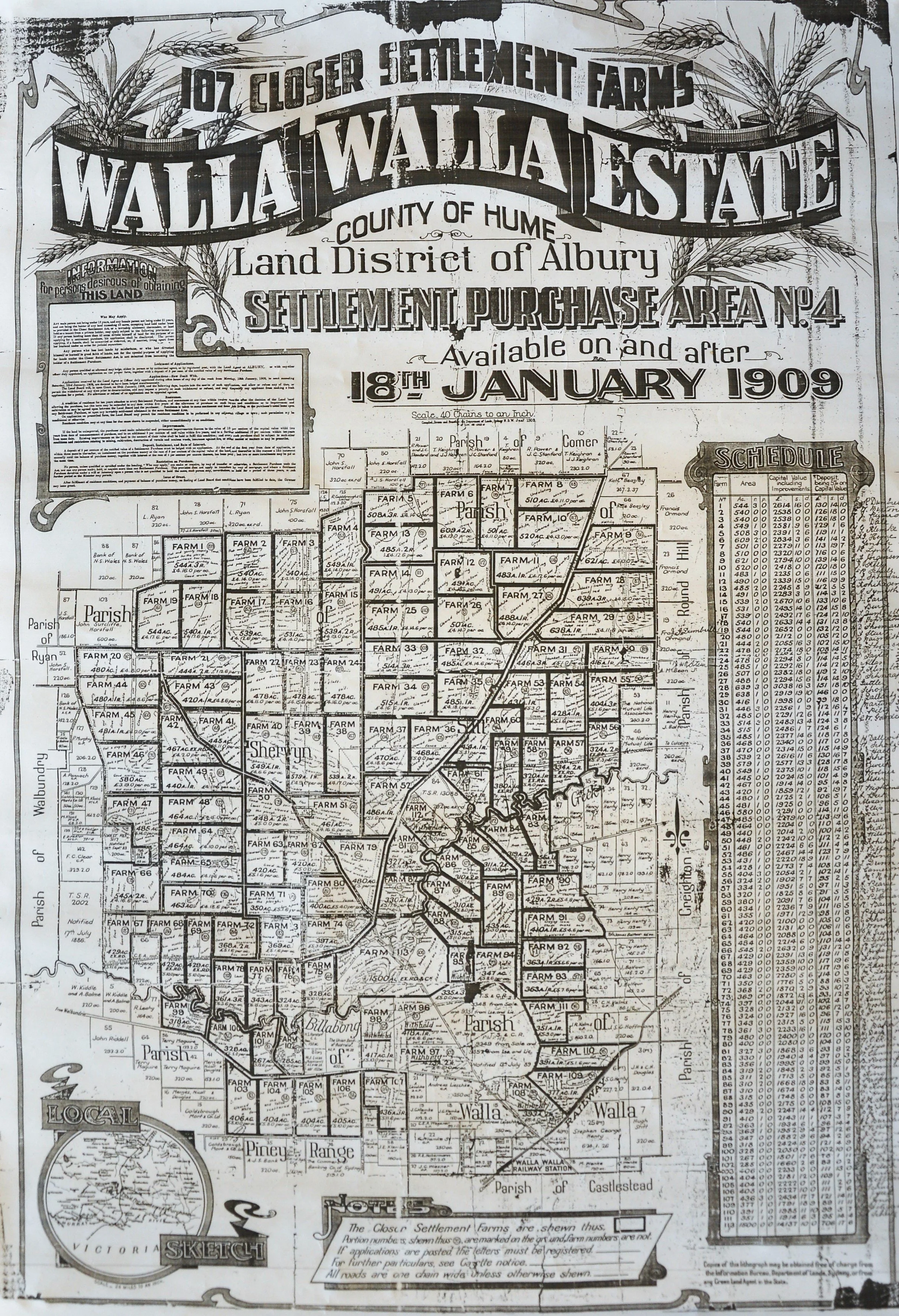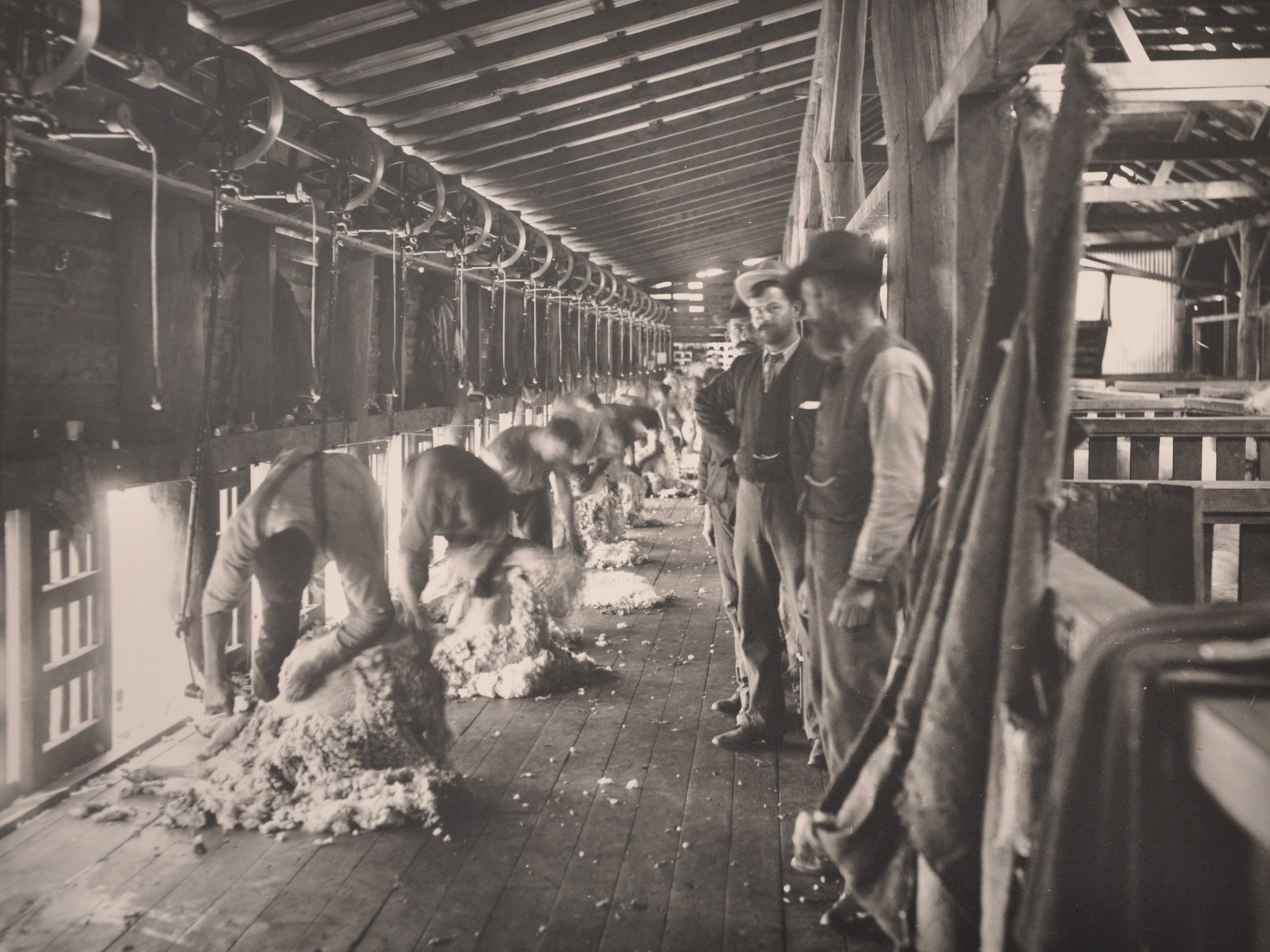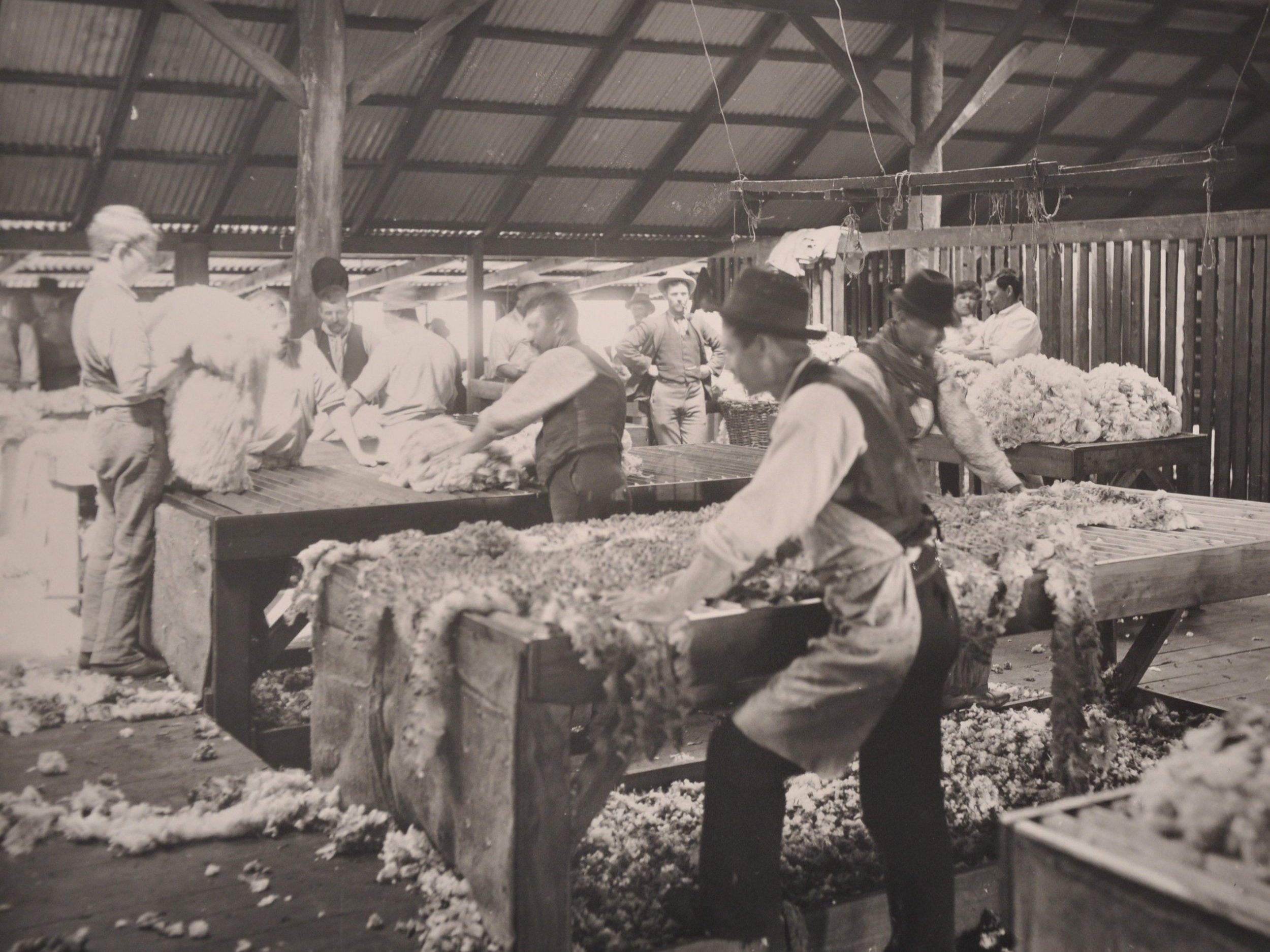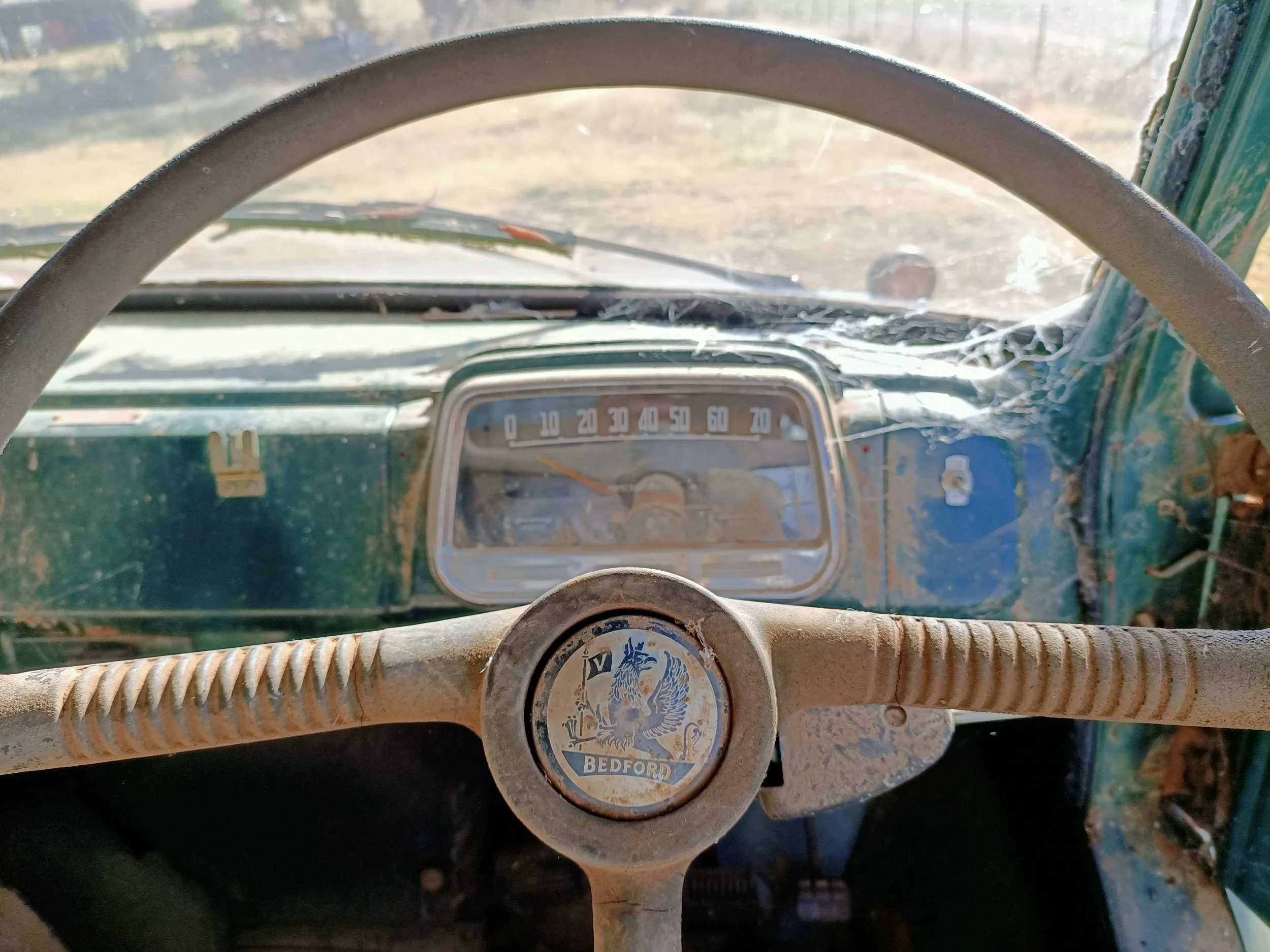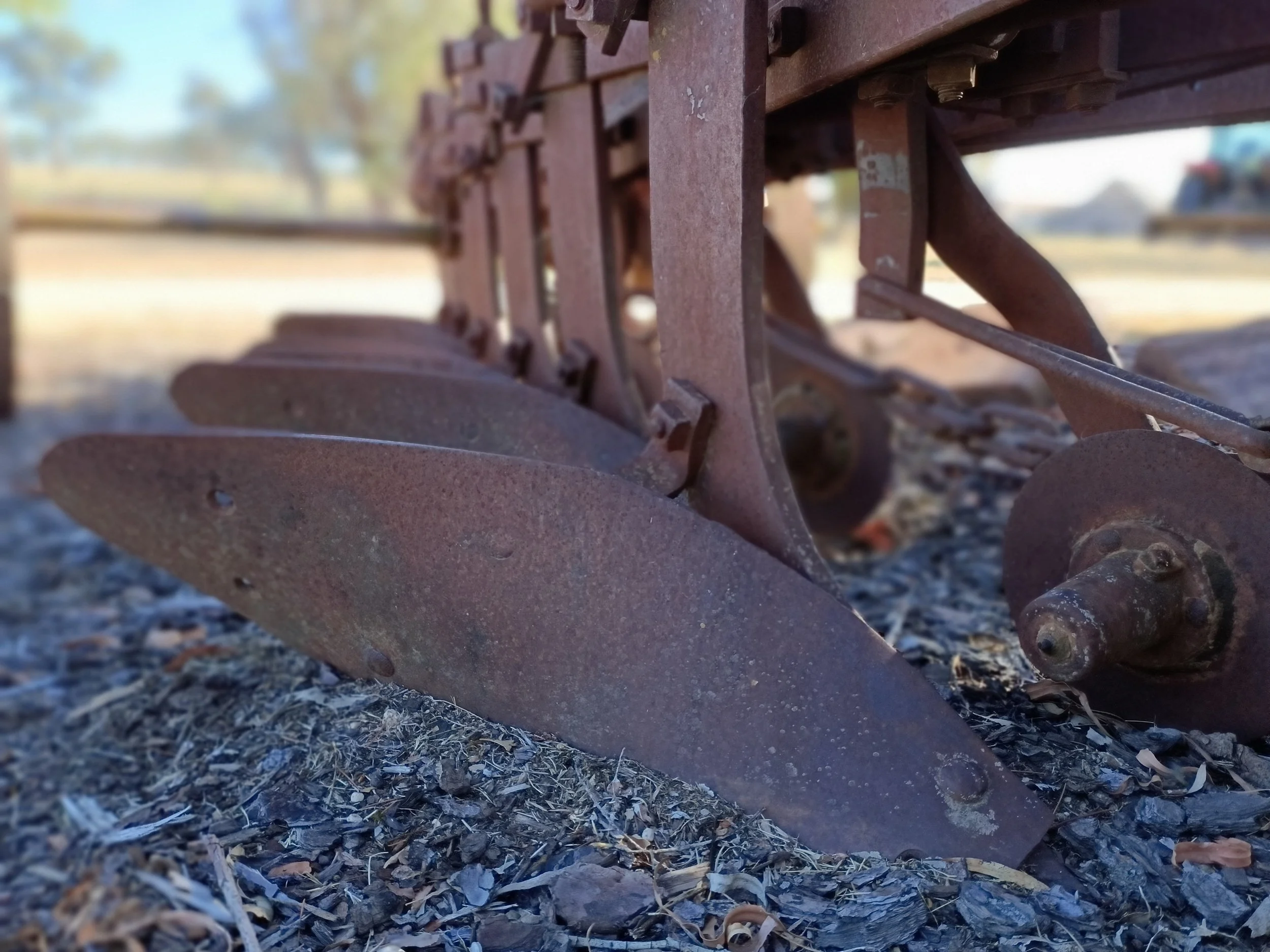
Walla Park.
Rich with history.
The Walla Park name originated in 1909 after the sub-division of Walla Walla Station. Through a government initiative known as closer settlement Walla Walla Station was bought and surveyed into 113 farms with the purpose of bringing new skills and labour to the region. Hermann (Harry) Paech migrated from South Australia to the Walla region and was fortunate enough to purchase the Homestead block, originally 3,093 acres. Herman and his wife Emma had four boys and in 1924 split the original block into four farms, pulled down parts of the Homestead and used the bricks to build three other houses for their boys. Today two of those properties remain in the Paech lineage. Walla Park is now 750 acres or 300 ha.
Walla Park has gone through many transformations with the introduction of cropping technology, diesel powered machines and electricity with a history in mixing farming. This farm is rich with both Indigenous and European history and has a lot of stories to tell, we invite you to join us at Walla Park as we embark on a journey of discovery and connection.
Station Life.
Walla Walla Station
Between the Murrumbidgee and Murray Rivers is the Billabong Creek, along which squatters from the east and south scrambled to take up runs. By 1850, the settlement was continuous along the Billabong Creek all the way to its junction with the Edward River at Moulamein. In 1838, the Walla Walla Station was gazetted by an 80 year old lady of the name Mary Larkham, who held the run for 4 years before she died in 1841 and the fifty square miles lease was passed on. From 1841-49, there were several managers for short periods, thought to be due to drought, until 1850 when John Sherwin held a 90,000 acre lease for 9 years. In 1859, Stephen Henty from the Port Phillip District bought the lease to Walla Walla Station and sent his first born son Richmond Henty (born 3 August 1837) to run the holding. In the same year his brother James acquired Round Hill Station (near Culcairn) for his son Tom. Stephen Henty was the fifth son of the Port Phillip pioneer Thomas Henty. Stephen and his wife Jane had 10 children.
The Henty’s stocked Walla Walla with 3,000 head of cattle, and Richmond, then aged only 22, settled down to life on the Billabong. In 1861, Richmond Henty sailed back to England to be married and returned with his bride, but before leaving he appointed a farm manager to Walla Walla Station and his two other properties; Wallandool on the Billabong Creek, and Moonbria north on the Yanco Creek. He also began to build a large brick house, which was to become the Walla Walla Station Homestead and was ready for him and his bride when they returned.
In 1863, to the disappointment of Richmond Henty, his father sold Walla Walla Station to Walter and Hugh Stitt. The price of 28,050 pounds, not only included the lease to the station (90,000 acres) but also 25,500 sheep, 500 cattle and four lots of freehold land which Stephen had purchased in the local area. Over the next 10 years the station leasehold would be reduced to 50,000 acres after changes in the Land Act allowing the freehold purchase of land and the arrival of German settlers from South Australia on ‘The Trek’. In 1869, the town of Walla Walla was formed.
In 1873, after the death of Walter Stitt, the lease was purchased by Archibald Menzies, Thomas Nicholl and Henry Douglas who already held large Victorian based stations and were related through marriage. When the holding was sold to Henry and Charles Douglas in 1876 it was merely a change of ownership in the family. Charles Douglas died in 1898. Henry Douglas returned to Scotland and later died in 1905.
Walla Walla Station Subdivision
In 1908, Walla Walla Station was compulsorily acquired from the Douglas brothers estate by the government for the purposes of subdivision and closer settlement. All titles were revoked and the station resurveyed into 113 farms and offered for private freehold.
By 1909, the newly created farms were open for inspection by prospective farmers. Selectors were asked to nominate in preferential order the farms they were interested in purchasing. Once applicants had nominated their preferences they were submitted to the courts. The process of application began on 18 January 1909 and continued for 5 days.
After submissions closed, names were drawn out in a ballot to determine the order of selection. Once your name was drawn out you could formally apply for your preferred lot. Applicants then attended the Court House and were interviewed to determine if they had enough capital and machinery or horses to make a success of their selection. Most were backed by their fathers or relations. Interviews commenced on 25 January 1909. This process was deemed such a success that it was later used in subdividing other stations and estates.
There were seven farms that were withheld from the original selection and were sold at a later date. One of these farms, just north of the township of Walla Walla, was further subdivided into workmen’s blocks and became known as ‘China Town’ as many of the Chinese workers and their families lived there.
Another was Farm 113, which included the original Walla Walla Station Homestead and the Lookout site. This farm along with selections 95, 96, 97 and 98, which all bordered farm 113, totalling 3,093 acres, were bought by Hermann Alfred Paech and his wife Emma who had four sons and two daughters. In 1924, Hermann split the farm into four and gave land to each of his sons, they also pulled down parts of the Homestead and used the bricks and materials to build houses on the other blocks. Two of the four blocks are still run by great grandsons and great-great grandsons of Hermann and Emma Paech, making them 4th and 5th generation farmers of this land. Pictured is a photo of the original County map outlining the subdivision of the Walla Walla Station.
Photo of the original county map used to advertise the subdivision of the Walla Walla Station
Walla Walla Station Homestead
When Richmond Henty arrived at Walla Walla Station in 1859 he found an old cottage, which he ‘turned into bachelors quarters and called it the barracks’. Richmond was prepared and able to make Walla Walla his head station and home, he began to build himself an appropriate homestead: ‘a pretty villa residence with every comfort and convenience… with a commanding view for several miles.’ It is believed that Richmond began building between 1859 and 1861, when it was finally completed is not exactly known, however the house that exists today, although somewhat modified, largely resembles the original house that Richmond built. Many of the materials were sourced from the property including: granite stones for the foundations of the walls, clay bricks hand made near the creek below the house and cypress timber hand milled on the property. The original corrugated iron was stamped with an English brand. Solid triple brick exterior walls, solid double brick interior walls and 14 foot ceilings hard plastered with lime and creek sand mortar. With 15 rooms and a large hallway, originally the house was heated with seven open fire places, not including the open cooking fire in the kitchen, now a hydronic heating system powered by a central wood fire makes heating more manageable. Large veranda's help to keep the house cool in summer.
Brooklyn Bridge early 1900's
Managers cottage. Visitor Tom Wade (standing), W.C Bowen (manager), daughters Ruby, Jessie and Pearl and Mrs Bowen. 1901
Front of station homestead in 1901 with Chinese gardener
Walla Walla Station creek crossing 1901
Walla Walla Station Woolshed
The Walla Walla Station Woolshed was a big deal for the local area in the late 1800’s. Not only did it employ many workers from the local town but it was also a magnificently designed building. With a central race and catching pens down the centre of the shed the sheep would enter from one end. Two lines of shearers on either side would drag their sheep across the board and once finished being shorn were released through the doors on the outer walls. The wool was collected by the rouseabouts and taken along the board past the other shearers to one of three sorting tables at the opposite end of the shed to where the sheep entered. Behind the sorting tables was the woolclassers’ table where the wool would be classed and taken to the pressing room where a large screw press would press it into bales. The Station Woolshed sits at Parkside, on the south side of the Billabong Creek.
The Station Woolshed that is still standing today is actually not the first woolshed built on the property. The first shed was burnt down in 1879, the new shed was built within six weeks after the fire. There were some 56,000 sheep to be shorn and any delay would have caused many problems. In that six weeks timber had to be harvested and sawn, the majority of the shed is Murray Pine except the outside posts, which are box and redgum.
After shearing, the sheep were often dipped for lice and moved across the Billabong Creek on wooden swing bridges. In 1889, 36 shearers shore 68,363 sheep, by 1894 this grew to 48 shearers and 77,161 shorn, all with the use of hand held blade shears. In 1898, the shed was converted to machine powered shearing and overhead shafts down either side of the shed could accommodate 40 shearers. In that year 57,659 sheep were shorn. 1,242 bales of wool were produced in 1899 valued at over £21,800. In 1901, 40 shearers shore over 65,000 sheep and 43 rouseabouts processed and pressed over 1,200 bales of wool.
20 shearing stands down either side of the shed
Catching pens were down the centre of the shed
The shed had 3 sorting tables an a woolclassers' table
Mr W.C Bowen (centre) was station manager in 1901. Large screw press.
In 1898 the shed was converted to machine powered shearing with overhead shafts
Shearers hut and workers
Sheep dipping along the creek after shearing
Chaff cutting with steam engines


